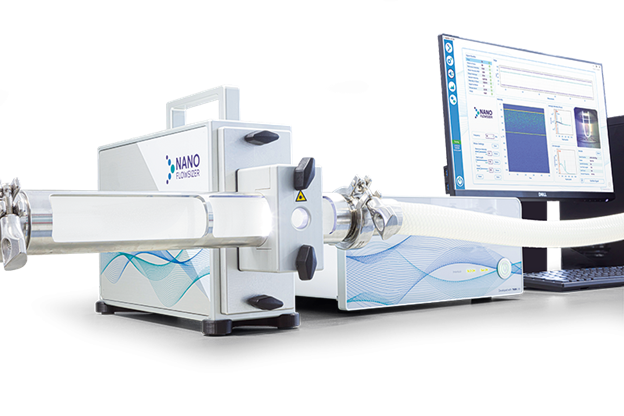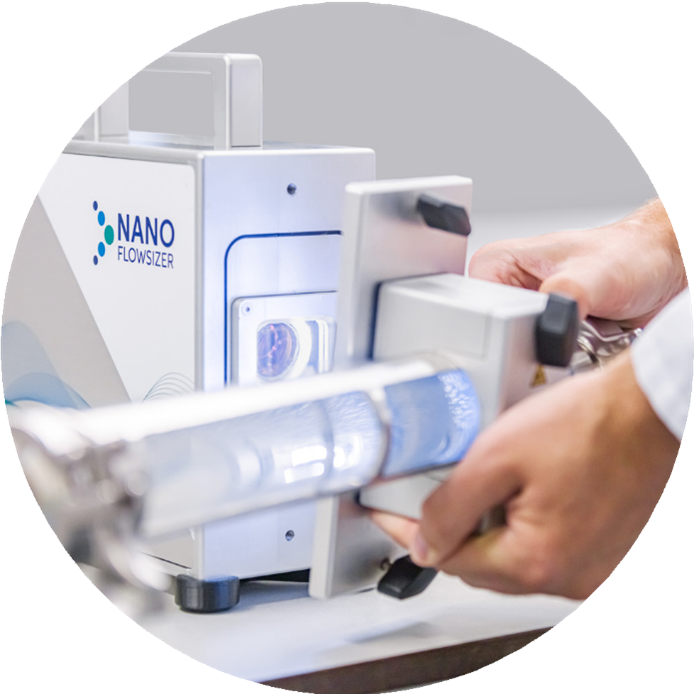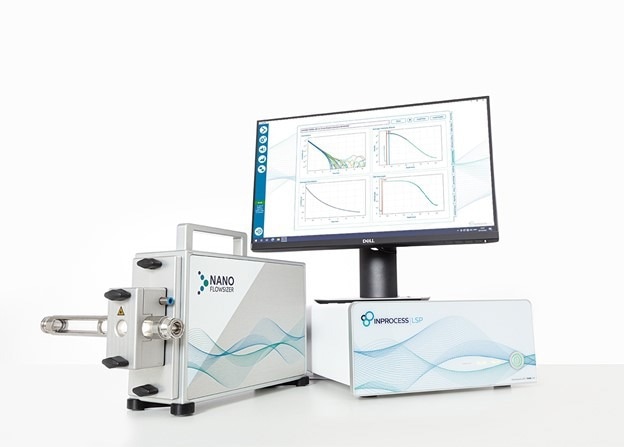Process Monitoring with Spatially Resolved DLS
The NanoFlowSizer is a groundbreaking Process Analytical Tool (PAT) designed for non-invasive, real-time characterization of nanoparticles. Using our proprietary Spatially Resolved Dynamic Light Scattering (SR-DLS) technology, the NanoFlowSizer provides accurate particle size distribution analysis across a wide range of sample turbidity levels. Whether in R&D, pilot, or full-scale manufacturing, this modular system seamlessly integrates inline, online, at-line, or offline to optimize your process efficiency.

Key Features
✅ Continuous real-time measurement of nanoparticles during processing
✅ Inline, online, at-line, and offline adaptability
✅ Hydrodynamic diameter & size distribution (D10, D50, D90, PDI)
✅ Compatible with highly turbid materials
✅ Non-invasive measurement in any container (e.g., syringes, vials, and flow cells)
✅ GMP-compliant software (XsperGo) with OPC-UA compatibility
✅ Fully customizable for lab, pilot, and manufacturing scales
Why Choose the NanoFlowSizer?
- Next-level process monitoring
- Unique Process Analytical Technology (PAT) solution
- Ultra-fast measurement (<5 sec per data point)
- Efficient data management
- Reduced risk of batch failures
- Cost-effective real-time monitoring
Technical Specifications
| Parameter |
Specifications |
| Measurement Principle |
Spatially Resolved DLS (SR-DLS) |
| Particle Size Range |
15 nm - 5000 nm |
| Turbidity Compatibility |
Low to very high |
| Measurement Modes |
Inline, online, at-line, offline |
| Flow Rate |
Up to 250L/hr |
| Data Collection |
Real-time, <5 sec per data point |
| Supported Particles |
LNPs, (in)organic particles, Milled API, protein, mAb, pAb, ADC |
| Software |
XsperGo (GMP features, PhaSR) |
| Probe Unit Dimensions |
25 x 35 x 10 cm |
Industry Applications

- Pharmaceuticals & Biotech – LNPs, proteins, antibodies, APIs
- Nanomaterials – Inorganic and organic nanoparticles
- Chemical & Food Industries – Emulsions, suspensions, dispersions
- Advanced Manufacturing – Continuous flow production
What InProcess' Users Say
"We were searching for an instrument that could perform non-invasive measurements, such as analysis directly within syringes. With the NanoFlowSizer, this is now a reality."
